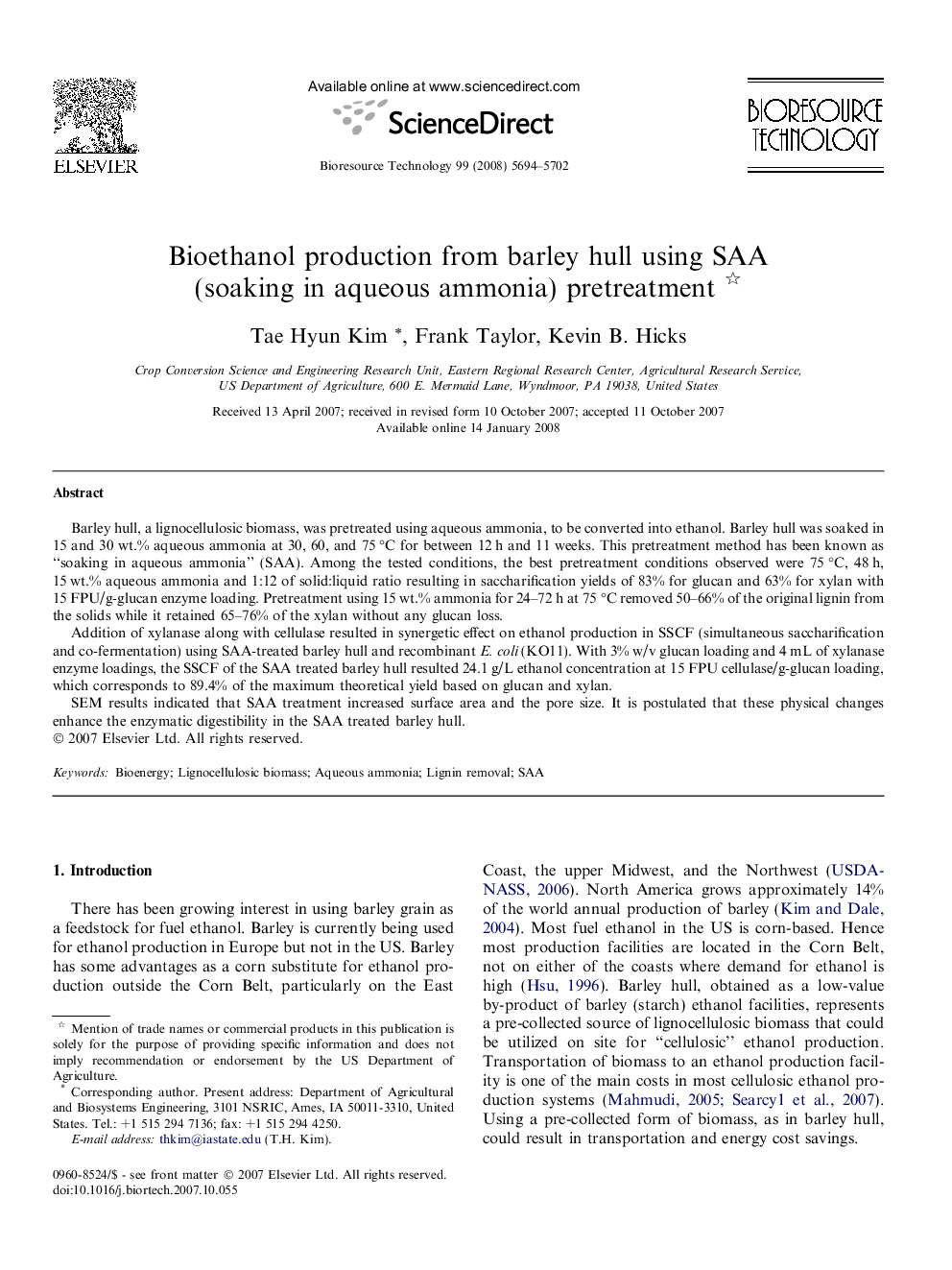| Article ID | Journal | Published Year | Pages | File Type |
|---|---|---|---|---|
| 685130 | Bioresource Technology | 2008 | 9 Pages |
Barley hull, a lignocellulosic biomass, was pretreated using aqueous ammonia, to be converted into ethanol. Barley hull was soaked in 15 and 30 wt.% aqueous ammonia at 30, 60, and 75 °C for between 12 h and 11 weeks. This pretreatment method has been known as “soaking in aqueous ammonia” (SAA). Among the tested conditions, the best pretreatment conditions observed were 75 °C, 48 h, 15 wt.% aqueous ammonia and 1:12 of solid:liquid ratio resulting in saccharification yields of 83% for glucan and 63% for xylan with 15 FPU/g-glucan enzyme loading. Pretreatment using 15 wt.% ammonia for 24–72 h at 75 °C removed 50–66% of the original lignin from the solids while it retained 65–76% of the xylan without any glucan loss.Addition of xylanase along with cellulase resulted in synergetic effect on ethanol production in SSCF (simultaneous saccharification and co-fermentation) using SAA-treated barley hull and recombinant E. coli (KO11). With 3% w/v glucan loading and 4 mL of xylanase enzyme loadings, the SSCF of the SAA treated barley hull resulted 24.1 g/L ethanol concentration at 15 FPU cellulase/g-glucan loading, which corresponds to 89.4% of the maximum theoretical yield based on glucan and xylan.SEM results indicated that SAA treatment increased surface area and the pore size. It is postulated that these physical changes enhance the enzymatic digestibility in the SAA treated barley hull.
